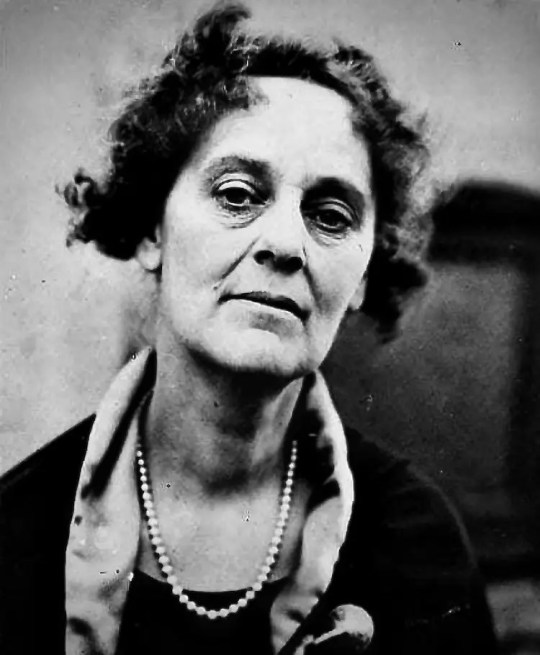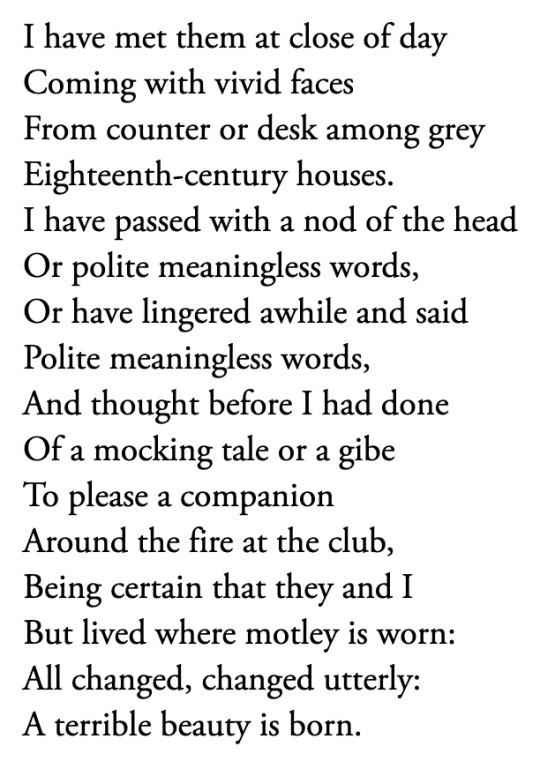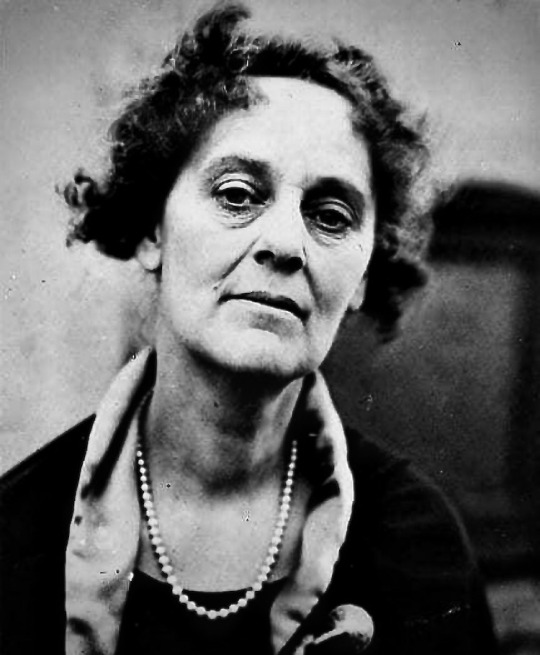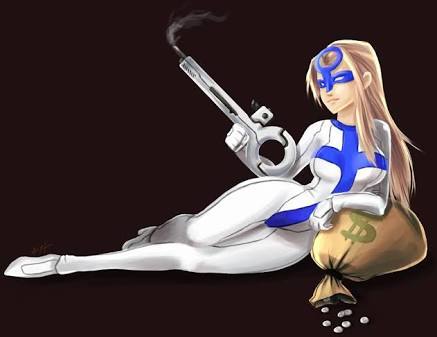#Maud Gonne MacBride
Text
#OTD in 1920 – Countess Markievicz was court-martialed by the British administration.
She had been held in Mountjoy since her arrest at Rathmines on 26th September. The proceedings took place at the Royal Barracks (now Collins Barracks).
Her close friends Dr. Kathleen Lynn, Maud Gonne MacBride and Hanna Sheehy-Skeffington were permitted to attend but under strict conditions.
Markievicz was charged with conspiring to ‘organise and promote’ Fianna Éireann for the purposes of…

View On WordPress
#Countess Constance Markievicz#court-martial#Dr Kathleen Lynn#Dublin#Fianna Eireann#Hanna Sheehy-Skeffington#Maud Gonne MacBride#Rathmines
16 notes
·
View notes
Text
WB Yeats was a loser incel and I'm tired of pretending he's not. Literally in "Easter 1916" look how he talks about Maud Gonne's husband John MacBride.
also the way people talk about Gonne and Yeats is weird. She rejected him and he continued to harass her trying to propose then started try to propose to her DAUGHTER.
WB Yeat's would be crying on a reddit forum about how he's "such a nice guy and she just doesn't get it" if he was born today.
#wb yeats#going to stir up trouble in the yeats fandom#william butler yeats#maybe this is me just being a bit of a history nerds#maud gonne#john macbride#poetry
3 notes
·
View notes
Note
Favorite Yeats poem? I can't get enough of him.
"Easter, 1916." He does everything he could do there; it's the greatest political poem in English of the 20th century. First, simply from a "craft" perspective, there is the propulsive but unobtrusive accentual (but not syllabic) meter, the pulsing three-beat line. Then the deceptively simple abab rhyme scheme—except that the even lines only ever off-rhyme. Sound mimics sense in this mingling of the beautiful and the terrible: our march song is never quite in perfect rhythm. We can never quite get the steps right as we march toward our sublime deaths. This isn't "The Charge of the Light Brigade."

For one thing, it's not public rhetoric, or not just public rhetoric. There is the quiet, personal opening of the first stanza, the "I" in its humble self-deprecatory historical setting, when we know what modern life and all its calculating mediocrity meant for Yeats. Then, enacting in language the transformation it proposes of public life, the first appearance of the refrain lifts the poem into epic.

In the second stanza, we find an epic catalogue of the flawed vessels of historical force, made more poignant by a knowledge of what it probably took for Yeats to praise MacBride ("a drunken, vainglorious lout") who had, in his mind, robbed him of Maud Gonne. Small-nation politics lends itself to such gossip. "Great hatred, little room," as he had it elsewhere. But that farce is past. Comedy has turned to tragedy in the national epic of the uprising.

But this, again, is poetry: not propaganda. You don't write the best political poem of the 20th century by celebrating emancipatory violence without subtlety, without nuance, without irony. Here we have the irony of a conservative revolution—again, recall the etymology of Tory—revolution not as the forward movement of history, as the benighted progressive thinks, but rather as the obdurate force that blocks history from engulfing the whole of the lifeworld. He sounds oddly like Benjamin here, as well as like Eliot, showing how vain it is to explain the most serious art and thought by shallow labels like left and right. "Enchanted" as it is, though, the stone is also opposed to nature, to the "living stream" figured most vividly in the prospective mating of hen and cock. As in "Sailing to Byzantium," another favorite, Yeats is worried about the conflict between the art and the life, between raw life and the artifice of eternity. The refrain does not appear, the poem's own flow broken.

Our bard, who as a member of the Protestant upper class favored negotation with England rather than violent revolt, expresses misgivings. Homer didn't have misgivings, for all that Yeats would later want to model himself on Homer's "unchristened heart." He has misgivings about more than just resistance tactics. He identifies with women, he fears for the nation's children, for the nation's very soul. The trope of the stone becomes disenchanted, no longer the Arthurian romance's source of political power but the Old Testament's hardness of heart, inviting divine chastisement. The cause of the revolutionaries itself comes into question for a moment. Was their violence part of the vanity, part of the "motley," with which the poem began? Have we really ever left the comedy, the 18th-century farce? But the motive spiritualizes the event: "excess of love." We think of Antigone, we think of Lear. Tragic heroism is still heroism. And in conclusion, the epic catalogue proper, before the refrain comes around again for our cyclic poet, itself changed utterly: "terrible beauty" no longer a political slogan but the aesthetic credo that will guide the rest of the poet's work out of the bee-loud glade and the Celtic Twilight and into "the desolation of reality," "gaiety transfiguring all that dread," the gaiety that is the achievement of form in the midst of terror.
10 notes
·
View notes
Text
By 1916, Yeats was 51 years old and determined to marry and produce an heir. His rival, John MacBride, had been executed for his role in the 1916 Easter Rising, so Yeats hoped that his widow, Maud Gonne, might remarry.[68] His final proposal to Gonne took place in mid-1916.[69] Gonne's history of revolutionary political activism, as well as a series of personal catastrophes in the previous few years of her life—including chloroform addiction and her troubled marriage to MacBride—made her a potentially unsuitable wife;[43] biographer R. F. Foster has observed that Yeats's last offer was motivated more by a sense of duty than by a genuine desire to marry her.
Yeats proposed in an indifferent manner, with conditions attached, and he both expected and hoped she would turn him down. According to Foster, "when he duly asked Maud to marry him and was duly refused, his thoughts shifted with surprising speed to her daughter." Iseult Gonne was Maud's second child with Lucien Millevoye, and at the time was twenty-one years old. She had lived a sad life to this point; conceived as an attempt to reincarnate her short-lived brother, for the first few years of her life she was presented as her mother's adopted niece. When Maud told her that she was going to marry, Iseult cried and told her mother that she hated MacBride.[70] When Gonne took action to divorce MacBride in 1905, the court heard allegations that he had sexually assaulted Iseult, then eleven. At fifteen, she proposed to Yeats. In 1917, he proposed to Iseult but was rejected.
That September, Yeats proposed to 25-year-old Georgie Hyde-Lees (1892–1968), known as George, whom he had met through Olivia Shakespear. Despite warnings from her friends—"George ... you can't. He must be dead"—Hyde-Lees accepted, and the two were married on 20 October 1917.[43] Their marriage was a success, in spite of the age difference, and in spite of Yeats's feelings of remorse and regret during their honeymoon. The couple went on to have two children, Anne and Michael. Although in later years he had romantic relationships with other women, Georgie herself wrote to her husband "When you are dead, people will talk about your love affairs, but I shall say nothing, for I will remember how proud you were."[71]
During the first years of marriage, they experimented with automatic writing; she contacted a variety of spirits and guides they called "Instructors" while in a trance. The spirits communicated a complex and esoteric system of philosophy and history, which the couple developed into an exposition using geometrical shapes: phases, cones, and gyres.[72] Yeats devoted much time to preparing this material for publication as A Vision (1925). In 1924, he wrote to his publisher T. Werner Laurie, admitting: "I dare say I delude myself in thinking this book my book of books".[73]
hinged
2 notes
·
View notes
Text
Written on Thursday 11 May, 2023
Recently, I have been reading biographies of multiple English poets. It is always exciting to read about the lives of poets because one thing that all of them have in common is their longing for someone which I guess motivates them to write. Out of all the poets I’ve read so far, I feel strong affection for William Butler Yeast - best known for his poem ‘ The Second Coming’
The poems written by him are indeed interesting but what is more interesting is his love life. Yeast had longing for a lady Maud Gonne. In 1889, they had met for the first time, and WB Yeast was into her since then, later on in 1891 he went to Ireland and asked her out but she rejected him. He admitted that was the turning point of his life, but after 8 years in 1899 he proposed again but Maud Gonne still chose to stick to her former decision.
Along the years Yeast received recognition mainly due to his major works in ‘ The Lake Isle of Innisfree ’ In 1900, he was again unsuccessful in his 3rd attempt. Maud Gonne again rejected him.
Yeast waited for one more year and tried his luck again in 1901, but as usual he failed to convince Maud Gonne. In 1903, she married John MacBride - however this marriage was not successful, they started to live separately after a few years. Yeast was also hurt and he made fun of John MacBride in his later poems.
Time kept on going, Yeast helped established Irish literary revival. Later in his life he met American poet Ezra Pound and several years after that wrote his famous poem Easter 1916.
By this time, the husband of Maud Gonne was dead and she was a widow. Yeast tried his luck for the last time and proposed again at the age of 51. Guess, what happened?
Maud chose to remain a widow. This left Yeast disappointed and he decided to propose Iseult Gonne the daughter of Maud Gonne! She was just 21. However, she too rejected him. Eventually, for the sake of posterity Yeast finally decided to marry Georgie a 25 years old lady. Even after the age difference, this marriage was a success.
Georgie wrote about Yeats “ When you are dead, people will talk about your love affair. I will not say anything, I will remember how proud you were. ”

1 note
·
View note
Photo

Nancy Huston ~ danse noire Edition en bon état Actes Sud 2013 Le récit se compose de dix parties, dont chaque nom est un terme de la capoeira : ladainha, ginga, moleque, malicia, terreiro, floreio, malandro, saudade, negaça, bicho falso. Chaque partie est la suite de trois chapitres, le premier évoque Milo (Milo Noirlac Astuto, années 1952-2010), le second Neil (Neil Kerrigan, années 1910-1939, et au-delà), le troisième Awinita (Awinita Johnson, années 1951-1952). Neil est étudiant en droit, avocat, rebelle, lecteur, poète, écrivain, connaissant William Butler Yeats et James Joyce. Ses Dubliners sont les révolutionnaires irlandais de l'Insurrection de Pâques 1916 et du premier Sinn Féin (1905-1970), avec John MacBride, les féministes autour de Maud Gonne. Il est amené à quitter l'Irlande pour tenter sa chance au Québec où il rencontre Marie-Jeanne Chabot, serveuse, qu'il épouse, et qui met au monde treize enfants, dont Declan Noirlac et Marie-Jeanne Noirlac. Il finit sa vie dans la maison de son gendre Régis librairiemelodieensoussol #melodieensoussol #oiseaumortvintage #libraire #librairie #librairiemarseille #librairieparis #librairieindependante #librairieenligne #librairiedoccasion #livresdoccasion #bookstagram #booklover #actessud #nancyhuston https://www.instagram.com/p/CopV8u1tmy1/?igshid=NGJjMDIxMWI=
#melodieensoussol#oiseaumortvintage#libraire#librairie#librairiemarseille#librairieparis#librairieindependante#librairieenligne#librairiedoccasion#livresdoccasion#bookstagram#booklover#actessud#nancyhuston
0 notes
Text
#OTD in 1920 – Countess Markievicz was court-martialed by the British administration.
She had been held in Mountjoy since her arrest at Rathmines on 26th September. The proceedings took place at the Royal Barracks (now Collins Barracks). Her close friends Dr. Kathleen Lynn, Maud Gonne MacBride and Hanna Sheehy-Skeffington were permitted to attend but under strict conditions. Markievicz was charged with conspiring to ‘organise and promote’ Fianna…#OTD in 1920 – Countess Markievicz…

View On WordPress
0 notes
Text

When you settle, you not only set yourself back, you set back those around you. Settling is accepting, instead of attempting. I’m not just talking about settling in a relationship sense; I’m talking about settling for doing less than what you’re capable of accomplishing each day, settling for saying less than what you know you should say, or settling for tortilla chips instead of waiting for your entrée. My point is: We settle for less nearly every fucking day. And, if it becomes a habit, it becomes a problem — settling creates comfort and comfort creates nothing. That’s why we need people like Maud Gonne to remind us that settling is for suckers. In 1866, Maud was born in England; her mother died young and Maud was sent to boarding school to receive an education. After graduation, she traveled with her dad (an army guy) to Dublin. In 1886, he died and Maud made the move to France. Here, she met/dated Lucien Millevoye, sparking her interest in activism and spurring her decision to return to Dublin. Over the next several decades, in addition to being a fashion icon — if you don’t agree, you can fight me — Maud started a revolution, established a newspaper, and even had a stint as a stage actress. On top of all this, she had a love life better than any daytime television show: three children, two baby daddies, five marriage proposals, one divorce, coffin sex — yeah, she DID IT ALL. It’s worth mentioning, four of those proposals came from one dude, the famous Irish poet W.B. Yeats; however, Maud rejected him constantly so he’d have sad-ass shit to write poems about. She actually said, “The world should thank me for not marrying you.” In 1918, she was arrested and served six months in jail for her political activism. In 1922, she was arrested for leading The Women's Peace Committee and The Women's Prisoner Defence League. In 1923, she was arrested for creating anti-government signs. And, she continued with her non-settling, no-fucks-given living until 1953, dying at the age of 86. (However, her attitude was passed down to her son, Seán MacBride, who was awarded a Nobel Peace Prize in 1974.) Well, you just learned some fucking history. You’re welcome. #SUNDAYSCHOOL
40 notes
·
View notes
Text
Sad that Maud Gonne couldn’t stay
But she had MacBride anyway
8 notes
·
View notes
Text
#OTD in 1920 – Countess Markievicz was court-martialed by the British administration.
She had been held in Mountjoy since her arrest at Rathmines on 26th September. The proceedings took place at the Royal Barracks (now Collins Barracks). Her close friends Dr. Kathleen Lynn, Maud Gonne MacBride and Hanna Sheehy-Skeffington were permitted to attend but under strict conditions. Markievicz was charged with conspiring to ‘organise and promote’ Fianna […]#OTD in 1920 – Countess…

View On WordPress
0 notes
Text
Coins,Women's Suffrage and The Powerpuff Girls...

90's kids who come across this post might remember the female villain featured in the episode 'Equal Fights' on 'The Powerpuff Girls Show',called Femme Fatale,who used misandry as an excuse to steal Susan B.Anthony coins only.Her 'reason' was that all other coins had men featured on them.
She even tricked the Powerpuff girls into letting her go by convincing them that the mayor and the city were using their powers,to no end of their own(She literally said that there is Batman and Superman and so many other 'men',while only Wonder 'Woman' on the other side).
The girls turn misandrist for a short period of time,destroying their male dolls by burning their heads with x-ray vision,refusing to do chores at home with Professor Utonium,and refusing to come to rescue when the Mayor calls them up,until Ms Keane and Ms Bellum explain to them that fighting for equal rights does not mean subjecting men to the same bigotry that women have received and suffered under.
It is soon revealed that Femme Fatale is a hypocrite,who does not stop from hurting females in the course of her crooked actions-she broke a police-woman's arm,held a lady worker at a bank at gunpoint and stole a teenager's hairstyle.

The girls eventually beat Femme Fatale up with a Susan B.Anthony coin and throw her in jail after a history lesson on how she fought for Women's Suffragette and when she cast a vote in favour of Ulysees Grant,she was asked to present herself before the commissioner.Ms Anthony asked the police official whether they arrested the law-breaking men in the same way.When he said 'no.',SUSAN DEMANDED TO BE ARRESTED IN THE SAME WAY AS LAW-BREAKING MEN,IN ORDER TO PROVE HER POINT THAT THE STATE WITHOUT WOMEN'S SUFFRAGE LITERALLY VIEWED THE FREEDOM OF WOMEN'S EXPRESSION AS ILLEGAL.
One of the most important lessons in Feminism was delivered as a cartoon to me,and so many others,whilst I was still a child of 4 years of age,and it ensured that it grew within me.

This morning my Father brought out a collection of coins from around the world that my Grandmother and his mother-in-law had left him.
Among them was a Susan B.Anthony American Dollar coin,minted in 1979(We are not American,but Indian,in case people are wondering).
I immediately recognized it from the vague memory of the 90's cartoon show,and though I could not place the name immediately,even though I could remember even the story of the demanded arrest(I initially thought it was Maud Gonne MacBride-she too fits a lot of the descriptions of Susan B.Anthony),a couple of Google searches solved that,in addition to providing all the other information about Susan B.Anthony,including the fact that she was the first woman to be ever featured on American currency.
Today,a kiddie cartoon prompted a 23 year old student of medicine to research one of the most important issues of women's rights movement in human history,and that is why 90's cartoons were legit.
I am thankful to have been a 90's kid.
#feminism#feminist#womensrights#90's kid#powepuff girls#girl power#susan b. anthony#women's suffrage#women's history month
14 notes
·
View notes
Text
#OTD in Irish History | 21 December:
Today is the Winter Solstice, the shortest day and longest night of the year. While the Solstices were not as important to the ancient Irish as the major fire festivals, they were nonetheless celebrated. Of the Solstices and Equinoxes, the Winter Solstice was the most important, since it marked the rebirth of the sun after the shortest day. Many cultures celebrated this time to commemorate the…

View On WordPress
#irelandinspires#irishhistory#OTD#1798 United Irishmen Rebellion#21 December#Éamon De Valera#Co Meath#Dáil Eireann#History#History of Ireland#Ireland#Irish History#Maud Gonne MacBride#Newgrange mound and passage tomb#Theobald Wolfe Tone#Today in Irish History
4 notes
·
View notes
Text

“John MacBride told me…that his life-long prayer had been answered. He said three Hail Marys every day that he should not die until he had fought the British in Ireland” - William T. Cosgrove on John MacBride. Chemist, Nationalist, Republican, member of the IRB, Estranged Husband to Maud Gonne, Father to Seán and One of the 16 rebels executed for the 1916 Easter Rising
#irish#gaeilge#irish language#irish quotes#ireland#easter rising#1916 easter rising#1916 proclamation#poblacht na hÉireann#irish republic#irish rebellion#éire#John MacBride
0 notes
Video
youtube
Yeats’ Grave
Silenced by death in the grave
William Butler Yeats couldn’t save
Why did you stand there?
Where you sickened in time
But I know by now
Why did you sit there?
In the GRAVE
Why should I blame her
that she filled my days
with misery or that she would of late
have taught to ignorant men most violent ways
or hurled the little streets upon the great
had they but courage equal to desire?
Sad that Maud Gonne couldn’t stay
But she had MacBride anyway
And you sit here with me
On the isle Innisfree
And you are writing down everything
But I know by now
Why did you sit here
In the grave
Why should I blame her
had they but courage equal to desire
1994

0 notes
Photo

-- W.B. Yeats (1865–1939), from journal entry concerning Maud Gonne, featured in “ The Gonne-Yeats Letters, 1893-1938″, by Maud Gonne, edited by Anna MacBride White and A. Norman Jeffares
2 notes
·
View notes
Photo

The Irish Transvaal Brigade flag which was sent to John McBride from Ireland by Maud Gonne and the Irish Transvaal Committee. ‘Mind the flag’, were some of the last words of John MacBride before his execution in 1916. (Priem, De Oorlog in Zuid Afrika [1900])
Available at https://www.historyireland.com/20th-century-contemporary-history/macbrides-brigade-in-the-anglo-boer-war/
0 notes